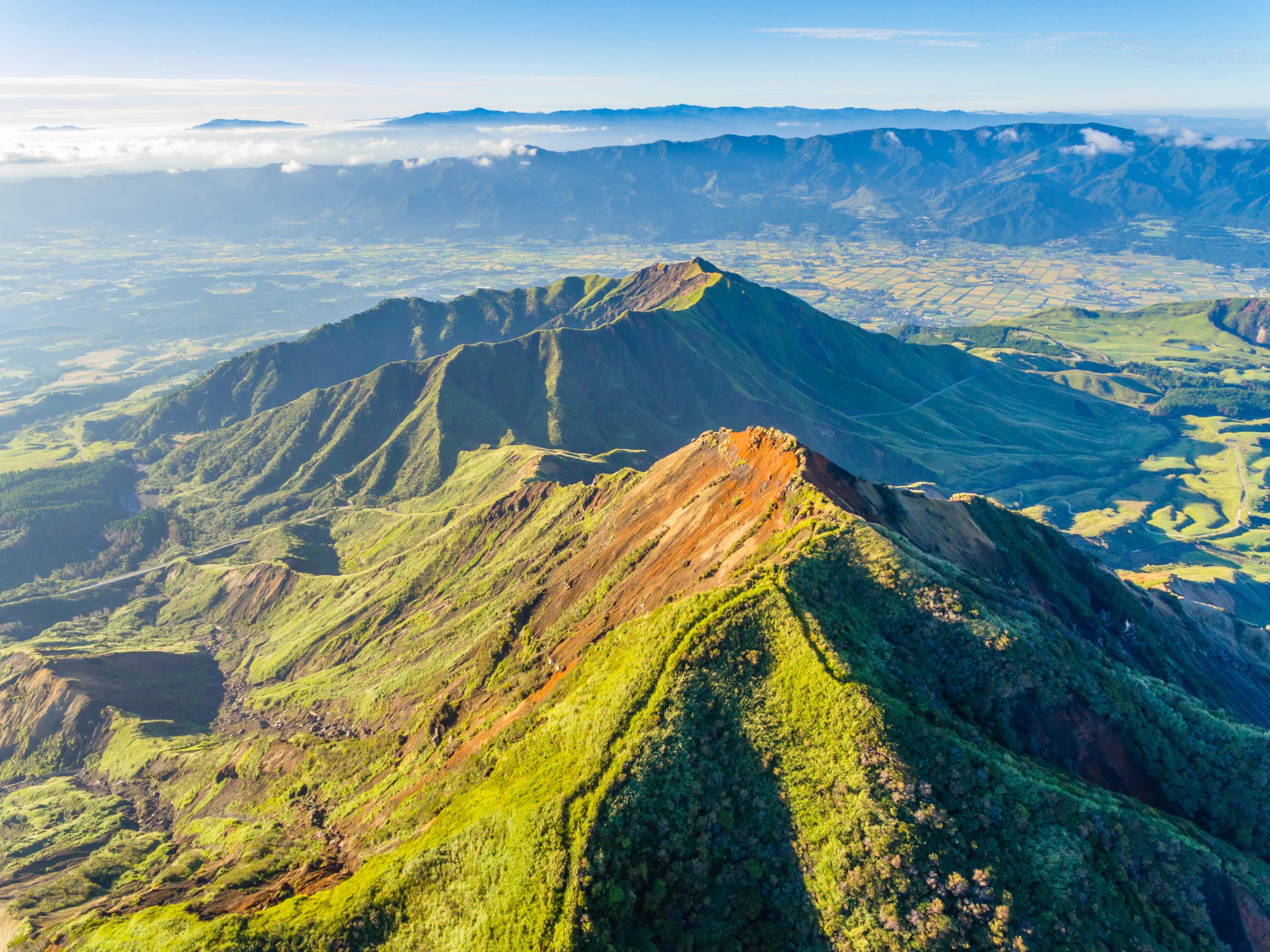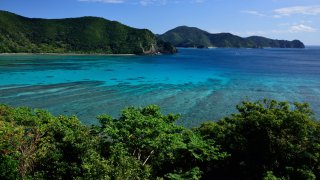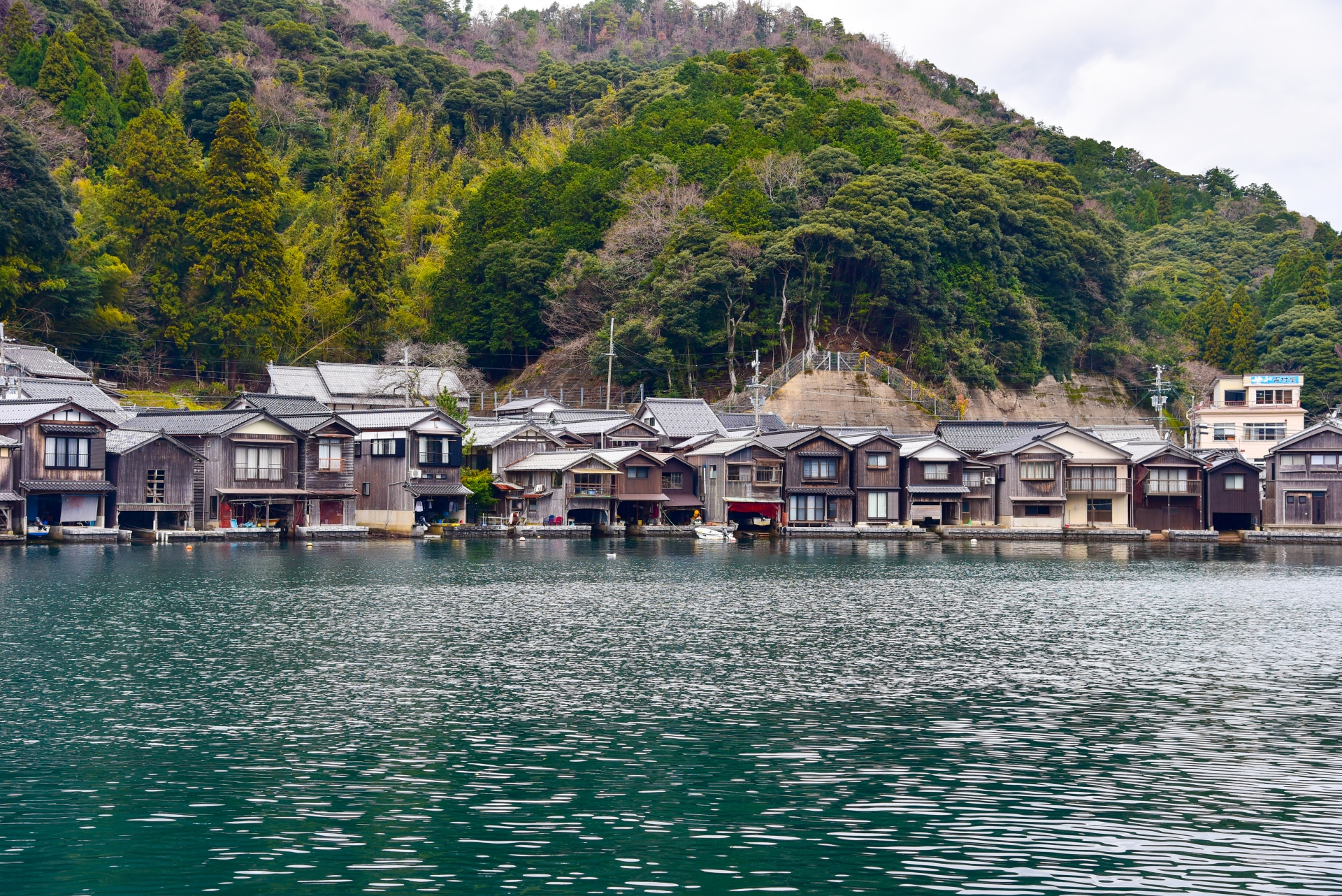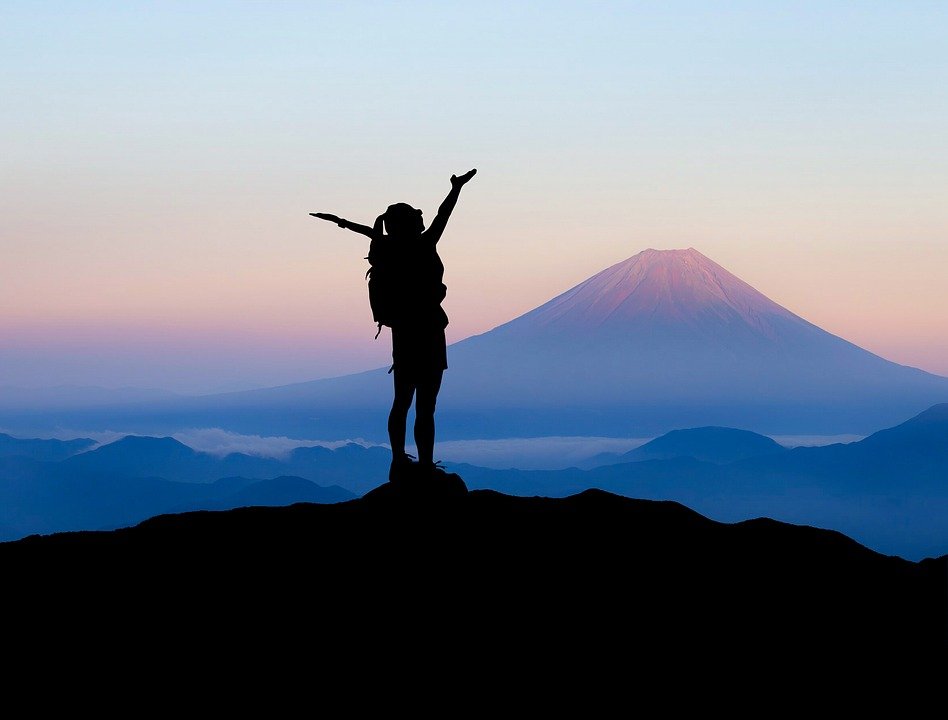Kyushu is a natural paradise that offers many historic treasures, modern cities, and natural beauty. The southernmost of the main islands of Japan is known for its rich rugged landscape, volcanic scenery, vibrant cities, stunning hikes, and delicious ramen. Kyushu translates as nine provinces but is surprisingly formed by seven prefectures. The land of volcanoes also has a large number of high-quality (natural) hot springs dotted all over the island and Kyushu is often dubbed onsen island. Despite all of its beauty, Kyushu is an underrated paradise that isn’t frequently included on the itinerary by (international) tourists. All the more reason to travel to Kyushu! Here we will provide you with a ready-made itinerary to see some of the best places to visit in Kyushu. The itinerary is somewhat fast-paced so that you can cover the most popular spots and get to all the iconic places in 10 days. We also included some optional day trips for you to consider. As this schedule serves as an inspiration for your perfect trip to Kyushu, you can choose to leave out places or change the timing.
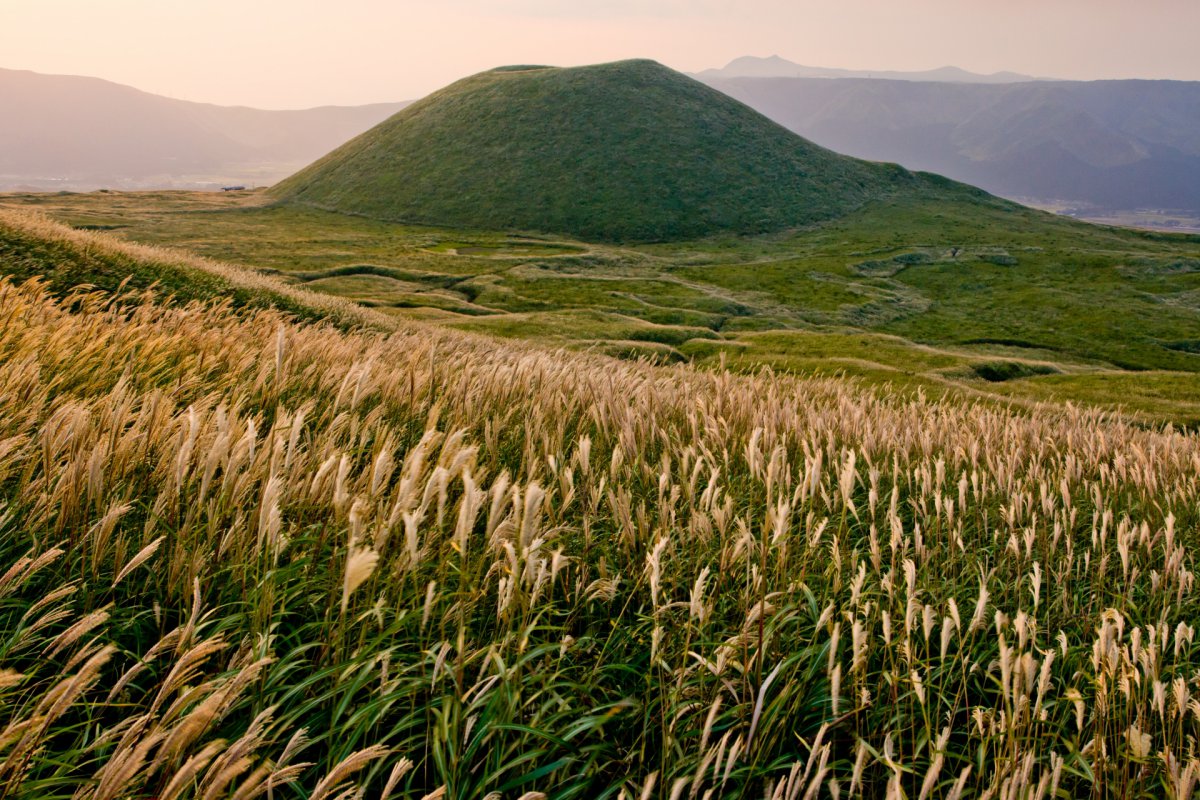
- The best time to visit Kyushu
- How to get to Kyushu and around
- Day 1: Fukuoka
- Day 2: Fukuoka – Saga – Nagasaki
- Day 3: Nagasaki – Shimabara – Kumamoto
- Day 4: Kumamoto – Kagoshima
- Day 5: Kagoshima – Yakushima
- Day 6: Yakushima – Kagoshima
- Day 7: Kagoshima – Kirishima
- Day 8: Kirishima – Takachiho
- Day 9: Takachiho – Mount Aso
- Day 9: Kurokawa – Yufuin
- Day 10: Beppu – Oita
- Blogs you might also enjoy
The best time to visit Kyushu
Kyushu has a comfortable climate all year round, but we recommend traveling in either spring or autumn. The winter is mild so you won’t see any snow, but it is still fairly cold at that time of the year. Summers in Kyushu are hot and humid and summer sees more rain than other regions in Japan.
Spring is definitely the most popular season to travel to Kyushu with sunny days and comfortable temperatures. The weather is perfect for all the outdoor activities and hiking that Kyushu is known for. It is also very popular at this time due to the cherry blossoms and flowers that are in full swing at this time of year.
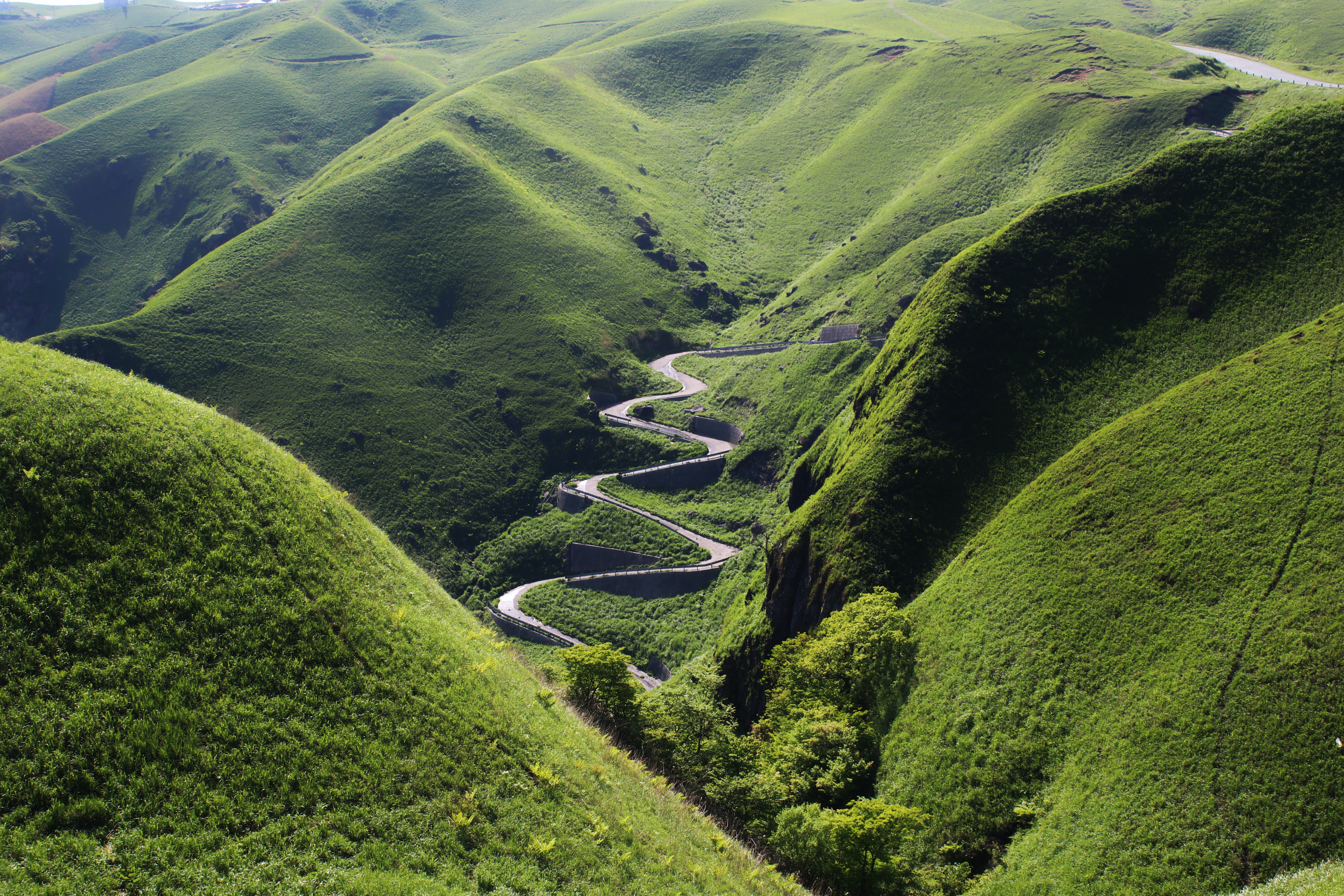
How to get to Kyushu and around
Most travelers will access Kyushu via Fukuoka, riding Japan’s famous shinkansen or boarding a flight to the well-connected airport of Fukuoka. But the island is home to a number of airports for example in Kagoshima, Nagasaki and Oita.
Kyushu has an extensive network of trains and buses within the major cities, connecting the seven prefectures on the island of Kyushu. The region is popular for its scenic trains such as the Yufuin no Mori and Kawasemi Yamasemi, along the coastline and crossing the mountainscape. The Japan Rail Pass (JR Pass) is also valid on most JR trains.
However, especially the more distant areas are easier to reach by car. With many breathtaking country roads, driving is the ideal way to explore Kyushu. Popular routes for a scenic road trip include the Nichinan coast road in Miyazaki, the Trans Kyushu Route, and the Aso Panorama Line in Kumamoto. We recommend exploring Kyushu by car as it will give you much more freedom and flexibility. You can find car rental agencies at airports and major stations.
The JR Kyushu Rail Pass is available for internationals and includes travel in the chosen area on the following JR trains:
- Local trains
- Limited express trains
- Shinkansen
*Shinkansen between Kokura and Fukuoka, subways, buses or private railways are not applicable.
| Validity | All | North | South |
| 3 days | ¥16,000 | ¥9,500 | ¥8,000 |
| 5 days | ¥18,500 | ¥11,000 | |
| 7 days | ¥20,000 |
Day 1: Fukuoka
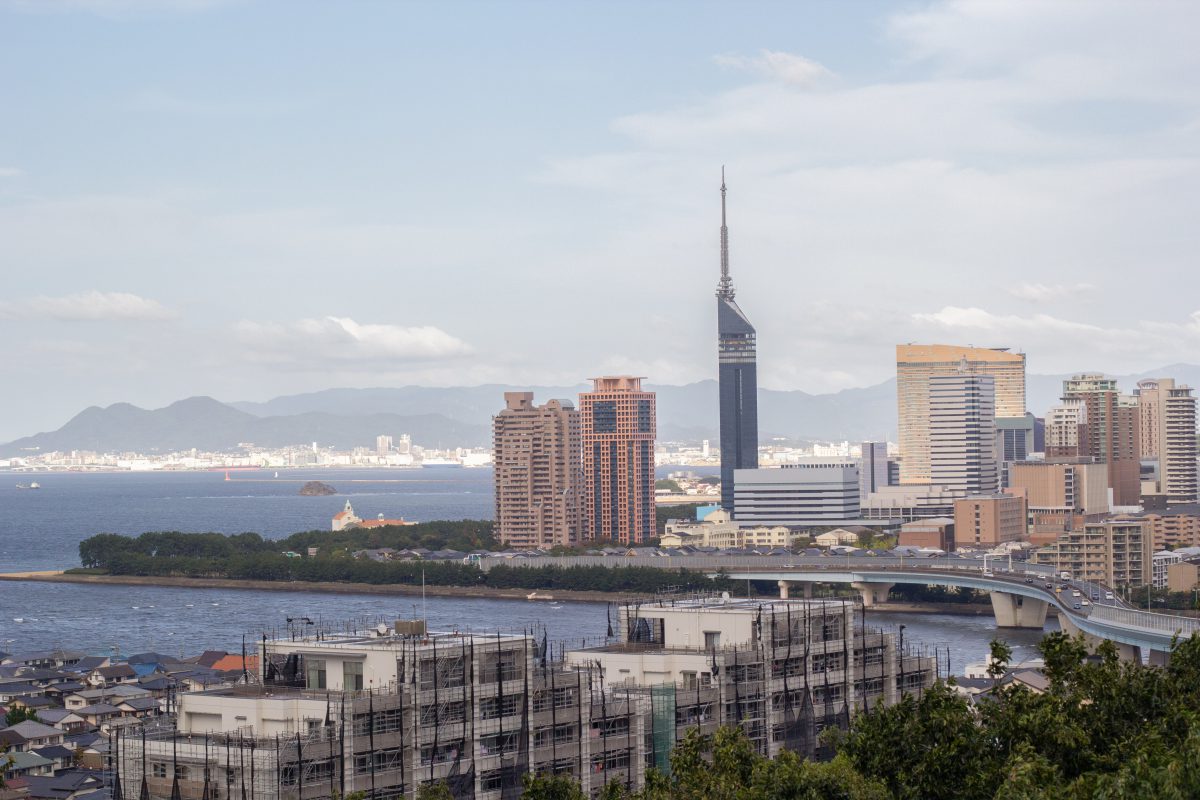
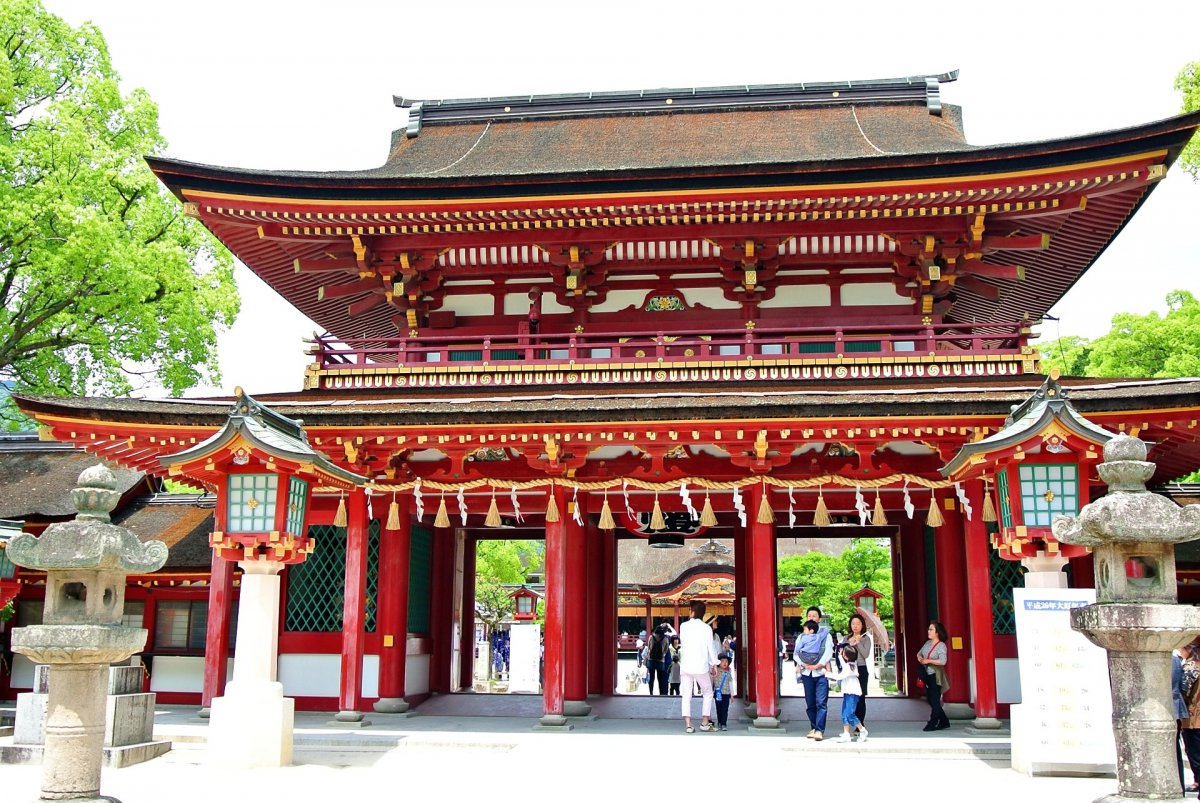
Kyushu’s largest and most vibrant city is Fukuoka (福岡), a great place to start your trip. The old castle town is located along Hakata Bay, which made it a favorable base for international trade. The city was first known as Hakata, but was renamed Fukuoka in the 17th century. We suggest you use this first day to discover the port city, Fukuoka is home to a number of top-notch shopping facilities and historically important temples and shrines such as Kushida-jinja Shrine and the Dazaifu Tenmangu shrine. Fukuoka’s castle was destroyed completely after the Meiji Restoration as it was seen as an unwanted symbol of the past, but the ruins and the bordering Maizuru Park are a very popular sakura viewing spot in Fukuoka. You cannot leave Fukuoka without trying the famous Hakata Ramen from one of the food stalls called yatai.
▼And don’t miss out on the final Sumo Tournament in Fukuoka in November! Book your tickets by clicking the Link below and get a professional guide that will give you essential background information to enjoy the experience to the fullest.

▼Fukuoka 1-Day Highlight Private Walking Tour (7 Hours)
Book a guided private walking tour in Fukuoka to explore the highlights of Fukuoka including Dazaifu Tenmangu shrine, Kushida Shrine, and other unique spots that only locals know!

Day 2: Fukuoka – Saga – Nagasaki
Both the drive and the train ride from Fukuoka to Nagasaki (長崎) will take you about 2 hours when traveling directly. You might want to take a detour and make some stops along the road in Saga prefecture, a small prefecture famous for Japanese traditional ceramics. Especially Arita and Imari are famous pottery villages. Start the day (very) early and catch the sunrise at Hamanoura Rice Terraces Lookout (浜野浦の棚田展望台) or enjoy the onsen facilities in Takeo Onsen (武雄温泉), a hot spring resort with over 1,300 years of history.
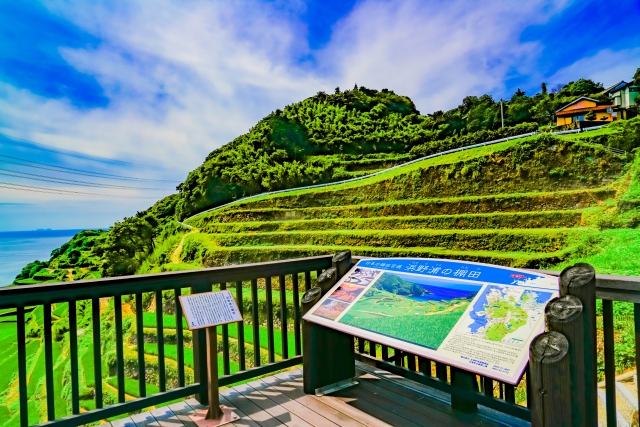
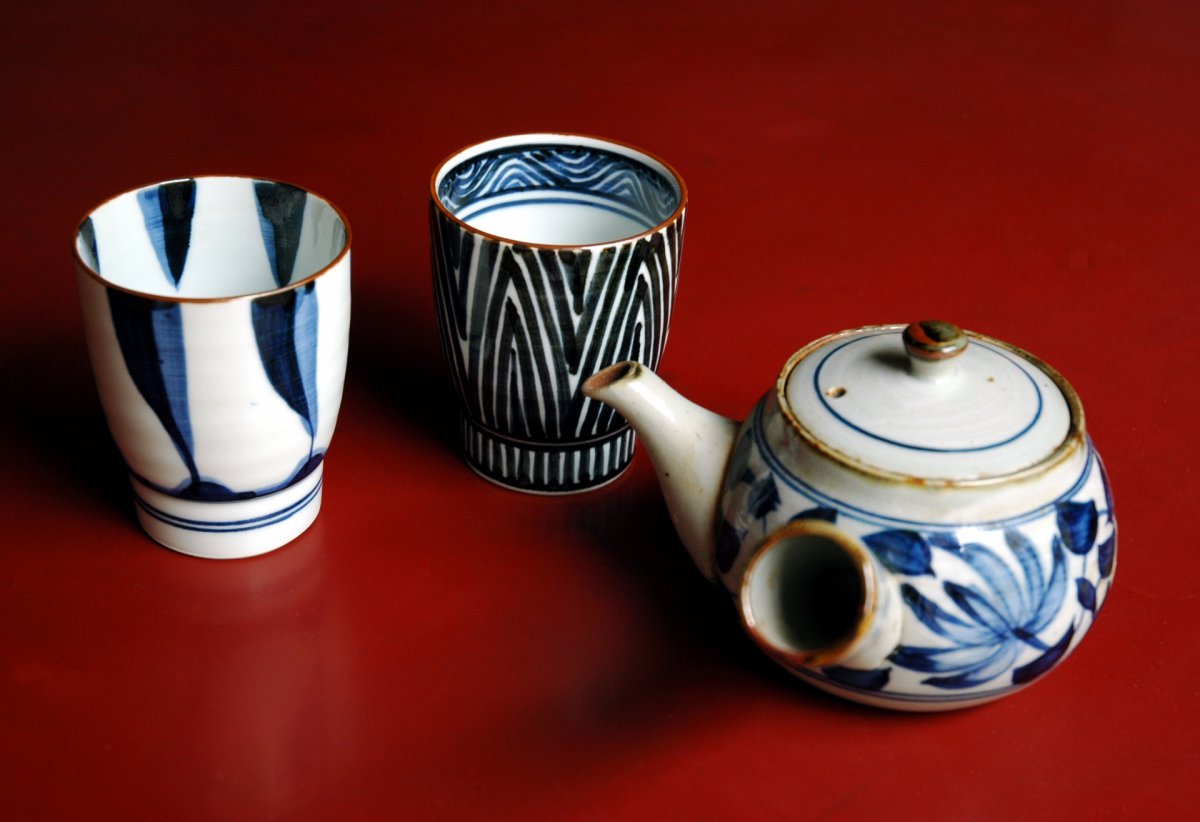
Nagasaki is widely known for two events in history; it was the location of the second atomic bomb dropping and Nagasaki was the most important port where a restricted number of foreign traders were allowed during the period of isolation between the 17th and 19th centuries, known as the Sakoku period.
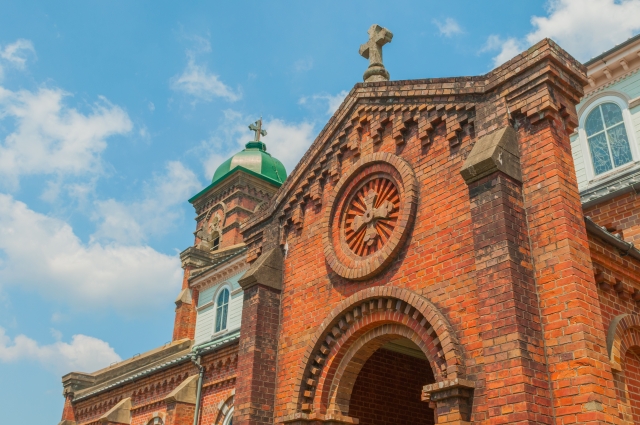
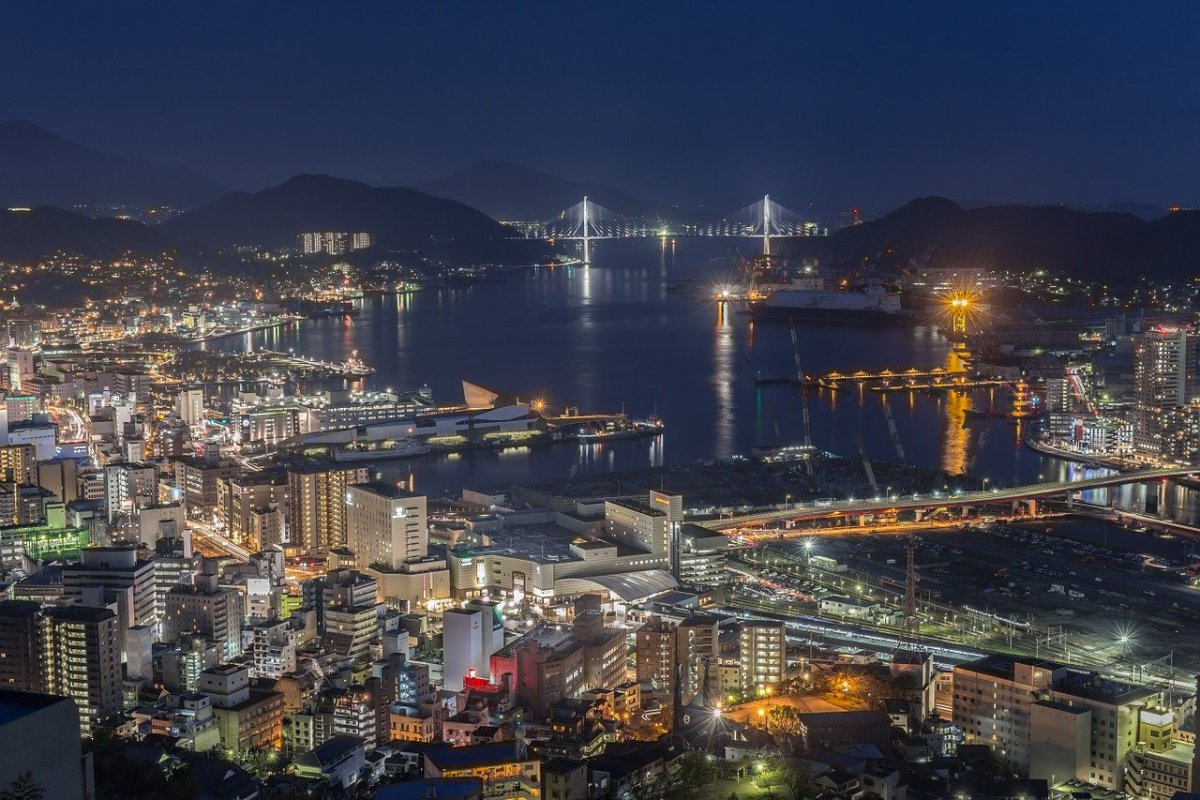
Depending upon the time of your arrival we recommend heading up to Mount Inasa for a spectacular view over Nagasaki. Nagasaki has a lot to offer, and the impressive night scenery that can be seen from Mount Inasa Observatory is one of them. When visiting Nagasaki, make sure to spend some time at the Nagasaki Peace Park where the victims of the second atomic bomb are commemorated. On August 9, 1945, Nagasaki became the second city that was destroyed by an atomic bomb, after Hiroshima. Another interesting place to visit in Nagasaki is Clover Garden, an open-air museum that showcases several beautiful mansions of the foreigners who lived in the city after the period of isolation. Or head to Dejima (出島), an artificial island that used to be Japan’s window to the world during that same period of isolation.
Right off Nagasaki’s coast, the abandoned island of Gunkanjima (軍艦島) makes for an interesting half-day trip. The small island served as an important coal mine until 1974 and can now be visited with a sightseeing tour.
▶Make sure to book a tour to enter the Gunkanjima beforehand
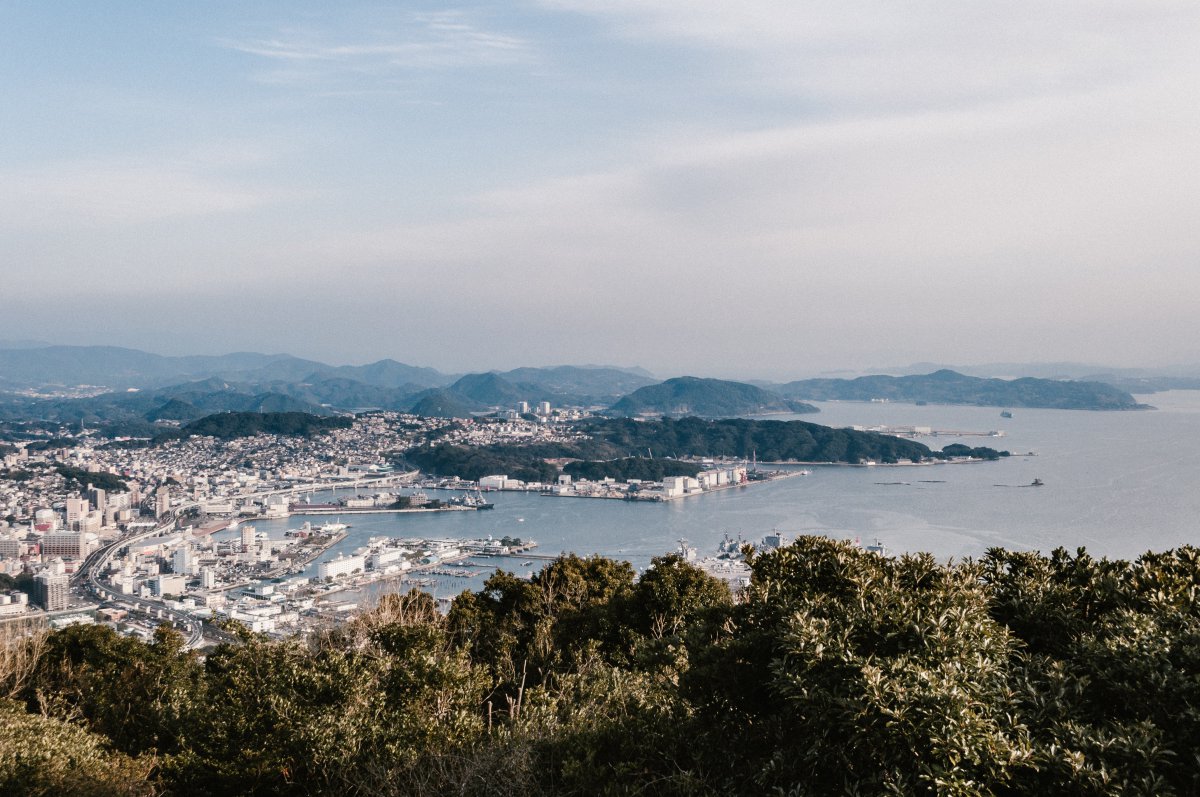
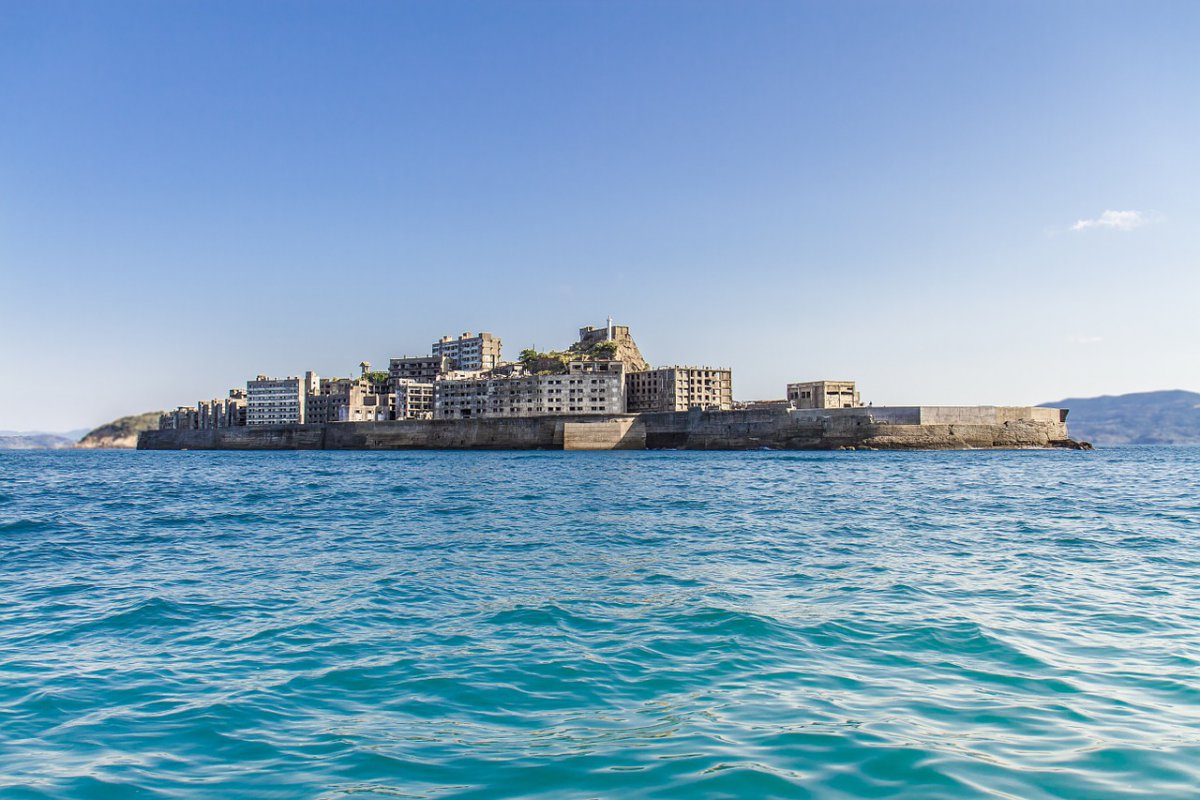
Day 3: Nagasaki – Shimabara – Kumamoto
On the third day make your way from Nagasaki to Shimabara (島原), this should take about 1.5-2 hrs by car or train. Shimabara Peninsula (島原半島) is a popular hot spring and hiking destination, with Mount Unzen (雲仙岳) and Unzen Onsen (雲仙温泉) at the center. Mount Unzen is one of Japan’s most active volcanoes and has erupted several times in the last centuries. Its most recent eruption was in 1991 when 43 people were killed. Near the top of Mount Unzen, Unzen Onsen is a hot spring resort surrounded by several hot spring fields.
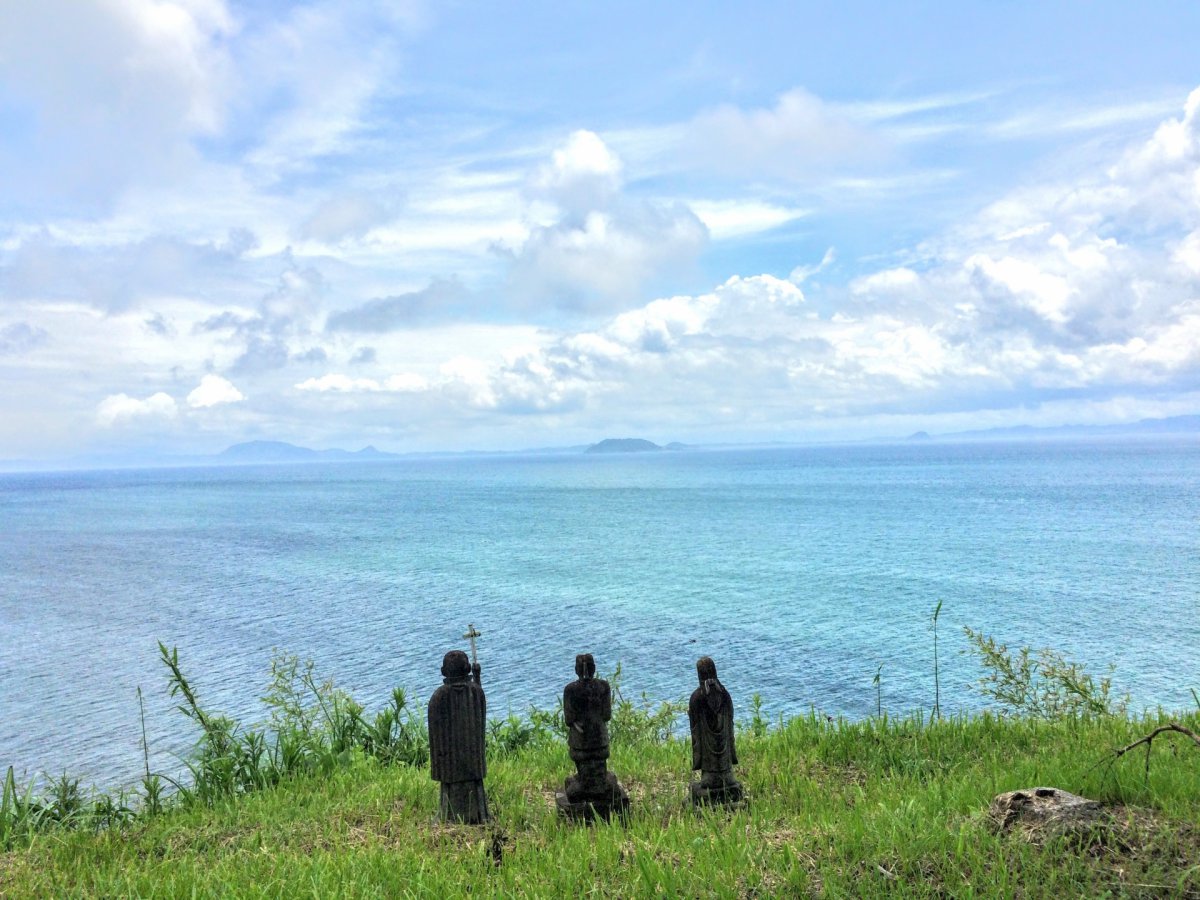
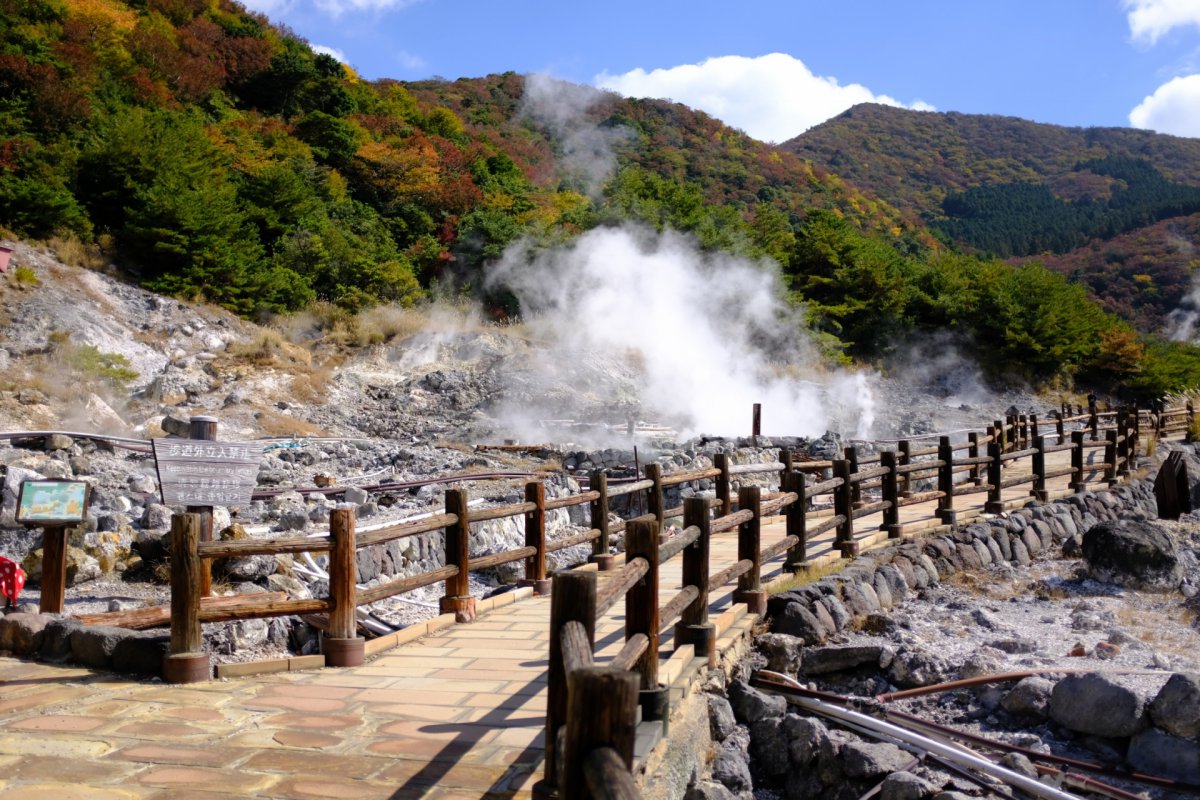
From Shimabara Port, catch the ferry to Kumamoto Port. From November to March, seagull feeding is available on the 60-minute ferry ride. Cars are allowed on board, but it is best to make a reservation (which can be made up to one month in advance).
Kumamoto (熊本) is the capital city of the namesake prefecture and is rich in history, with sites such as Kumamoto Castle, built over 400 years ago and considered one of the three most magnificent castles in Japan. Kumamoto is highly praised by nature lovers, blessed with breathtaking scenery and many hot springs. It is also called the land of water with hot spring water flowing from more than 1,000 locations across the prefecture.

Day 4: Kumamoto – Kagoshima
Spend the morning exploring some more of Kumamoto, visit for example the Suizenji Garden, a beautiful serene Japanese garden. For lunch, have some Kumamoto Ramen, this local variant of the famous Japanese comfort food is characterized by mild tonkotsu soup, made rich in flavor with the addition of chicken bones mixed with garlic oil or chips.
Around midday make your way to Kagoshima (鹿児島), also known as the Naples of Japan for its bayside location and towering active stratovolcano Sakurajima (桜島). Stay overnight in Kagoshima for example at the Shiroyama Mountain Hotel, located on top of the hill and with hot spring baths overlooking Sakurajima volcano and the sea.
This guided tour will help you to explore all the highlights of Kyushu’s Kagoshima in a day tour, it’s highly recommended if you have a limited time or want to discover the city with a local guide.
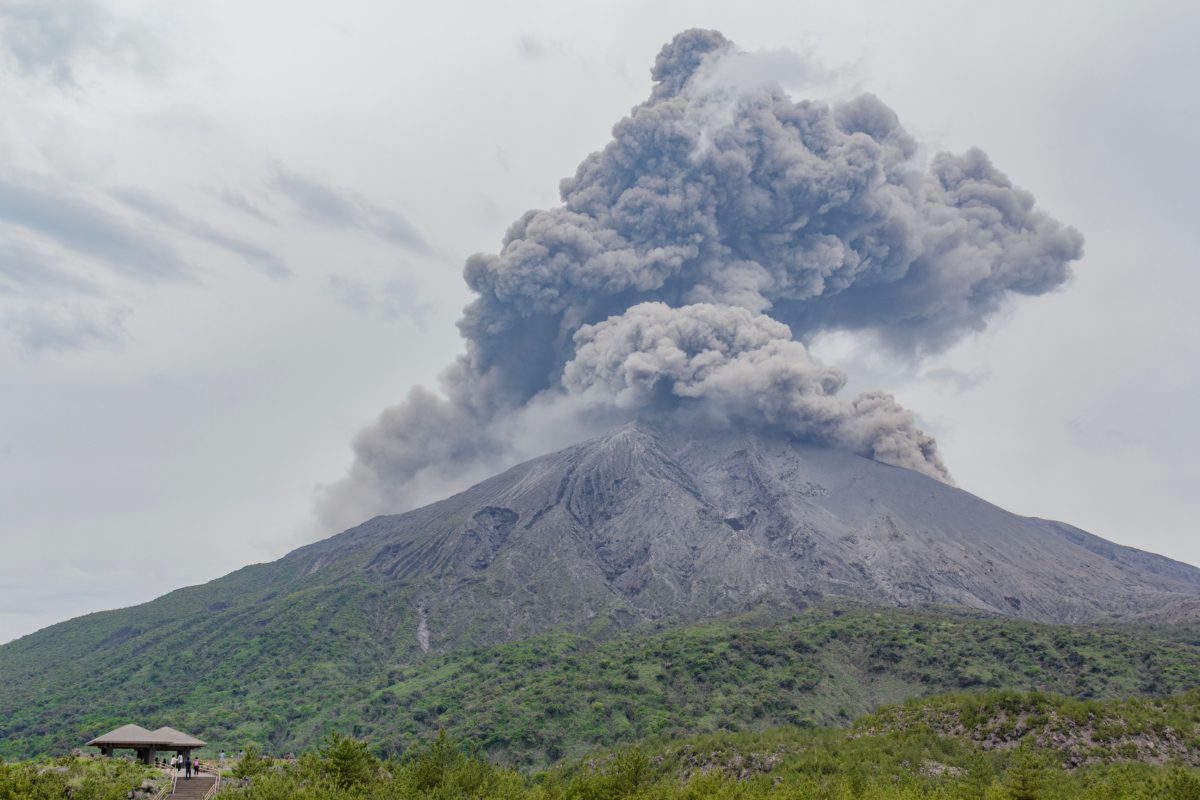
Day 5: Kagoshima – Yakushima
In the morning, board the ferry from Kagoshima to Yakushima (屋久島), a true nature lover’s paradise that served as an inspiration for Ghibli’s famous Princess Mononoke’s film. The small island of Yakushima is located about 60 km off the coast of Kagoshima and is famous for its towering mountains, its ancient cedar forest – Jomonsugi (縄文杉) is a giant cedar tree which is estimated to be 2000 to 7200 years old – and many well-marked hiking options. Much of the island is a designated UNESCO World Heritage Site.
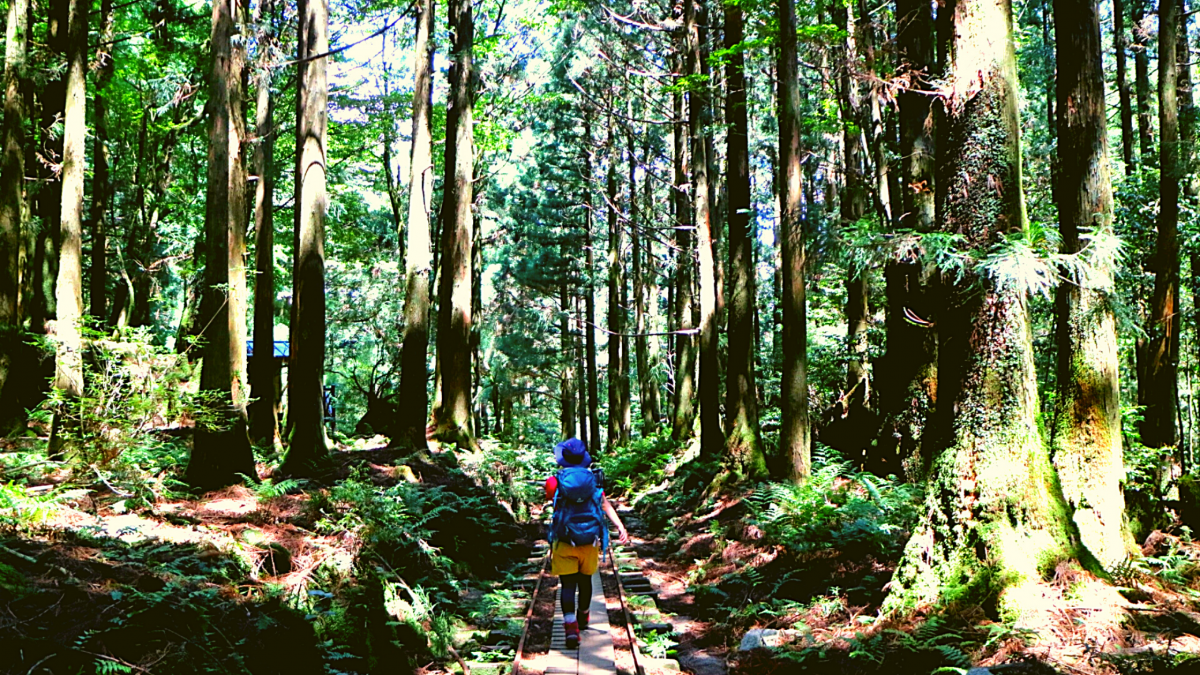
Enter the land of Princess Mononoke and pick one of the several hiking routes of Yakushima. We recommend visiting the Shiratani Unsuikyo (白谷雲水峡) where you have the option of several trails ranging from a 1 hr to a 6hr walk.
The island is quite small and it’s possible to access all of Yakushima’s main sights by bus, though service is infrequent. The best way to explore Yakushima at your own pace is by car. Cars can be rented on the island, and it is also possible to bring your car from Kagoshima with the car ferry.
Recommended tour: Yakusugi Cedar Forest Walking Tour on Yakushima Island
Day 6: Yakushima – Kagoshima
Spent the entire day exploring the island before taking back the ferry to Kagoshima. Admire mesmerizing waterfalls like Okonotaki, Senpiro, and Janokuchi, or the historical Yaku Shrine. One of the highlights of the island is the natural hot spring bathing pools formed from ocean rocks along the coast of the Sea of Japan. Bear in mind that the last ferry to Kagoshima departs from Yakushima at 4pm.
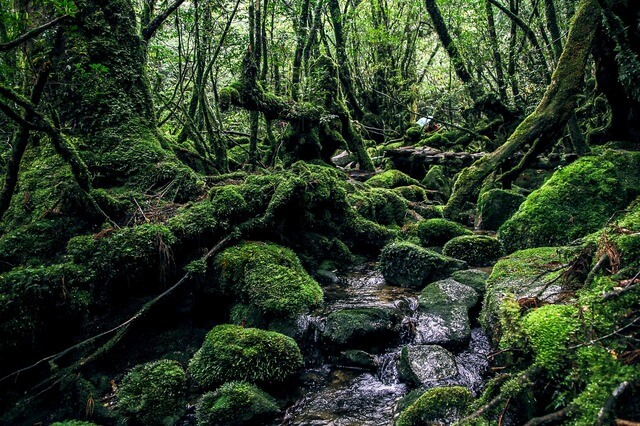
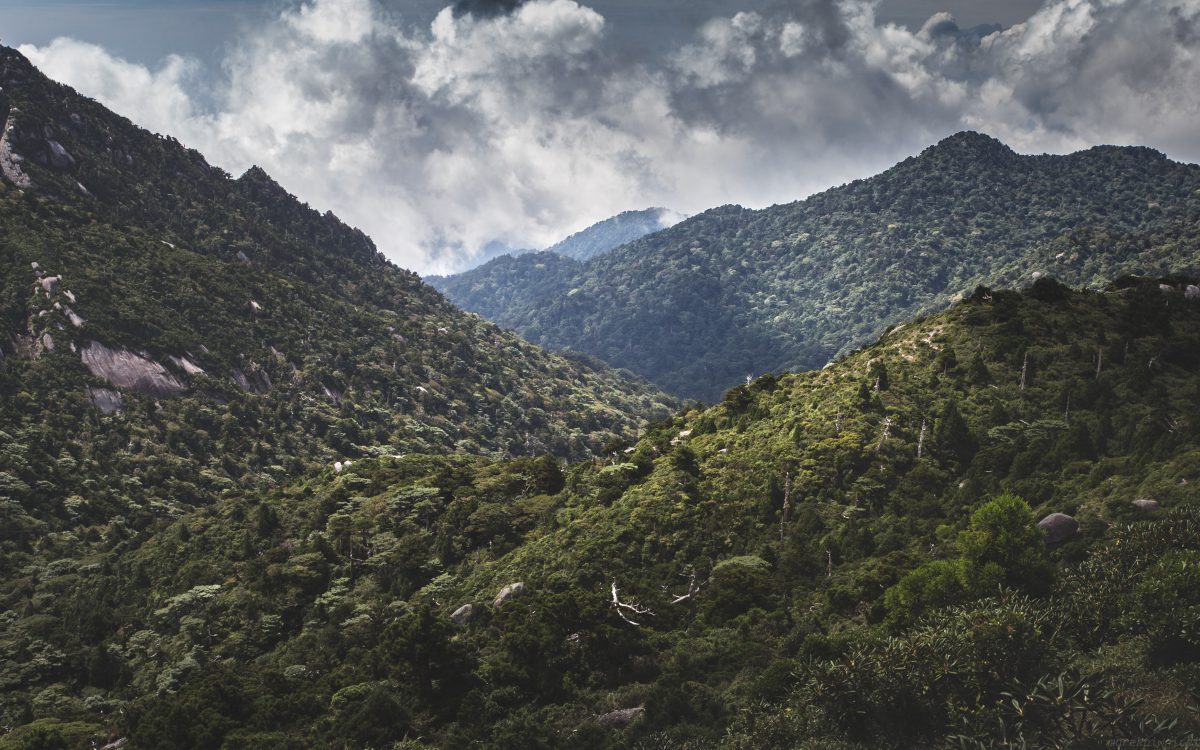
Day 7: Kagoshima – Kirishima
After waking up in Kagoshima the next morning, explore the city a bit more and transfer to Kirishima (霧島). The area of Kirishima consists of volcanic mountains, highlands, hot springs and volcanic lakes and it was the first to be designated as a national park in Japan in 1934. The absolutely breathtaking scenery is a feast for the eyes and the mountains offer a wide range of hiking courses suitable for both beginners and more experienced hikers. Nearby Ebino Kogen (えびの高原) and Kirishima Onsen (霧島温泉) are the two best hot spring towns in the Kirishima area. We recommend staying overnight in Kirishima Onsen, one of Japan’s best hot spring resorts with high-quality sulfuric water. You can also opt for staying in Ebino Kogen, an epic place to see the autumn colored leaves and the starting point of several hiking trails. Kirishima Mountain is also an important site in Japanese mythology and home to a large beautiful shrine; Kirishima Shrine is an impressive ancient shrine said to be built in the 6th century!
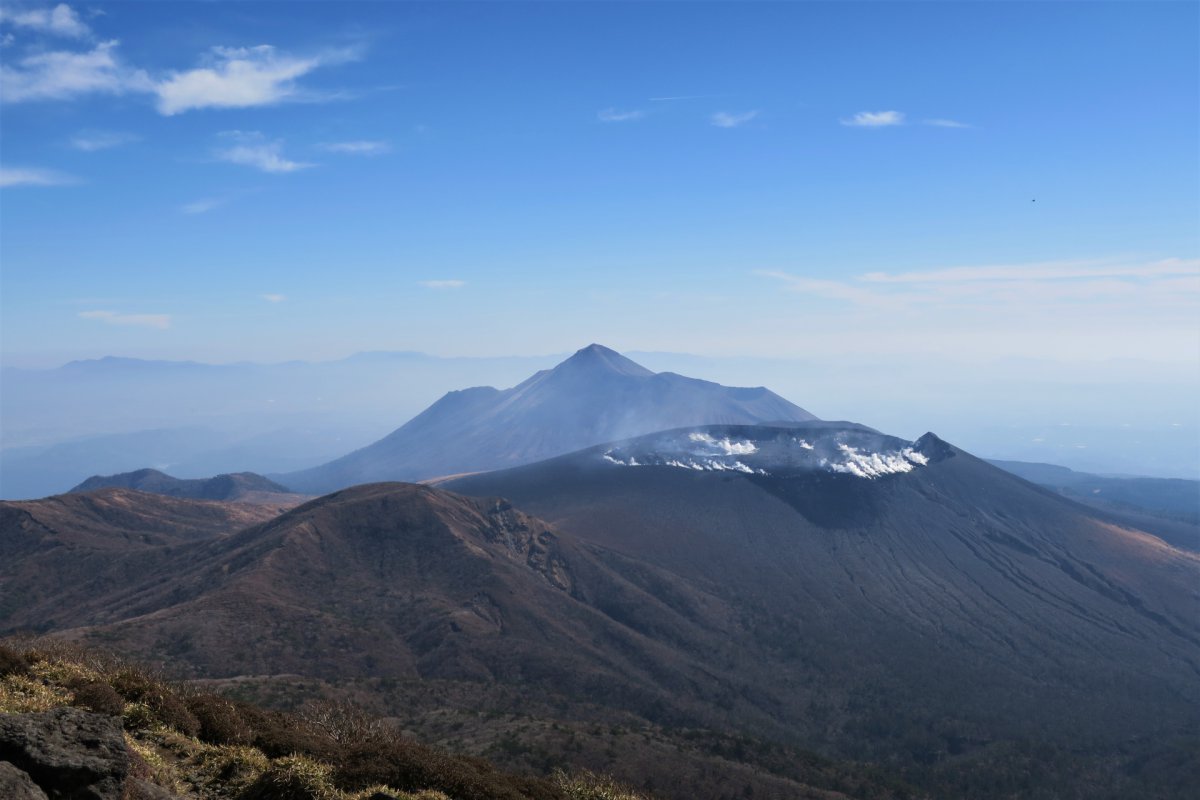
Day 8: Kirishima – Takachiho
The trip from Kirishima to Takachiho (高千穂) takes about 3~3.5 hrs by car without any stops. Depending on your preference you can either do some more hiking in Kirishima or you can also decide to take a slightly longer route and drive along the coastline of Miyazaki (宮崎市), a beautiful scenic drive. In the south, the Nichinan Coastline is known as one of Japan’s best road trips, with beaches, great surfing spots and the stone giants of Sun Messe Nichinan along the way.
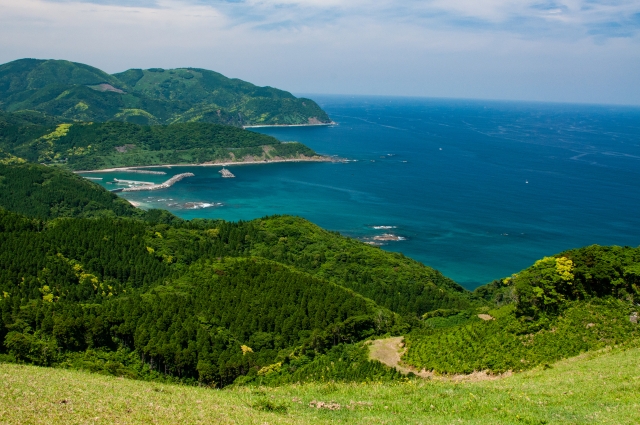
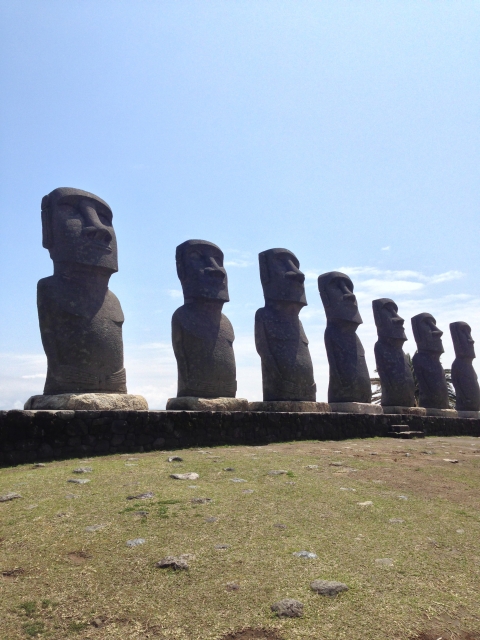
In northern Miyazaki you’ll find one of Japan’s most beautiful nature spots: Takachiho Gorge (高千穂峡). The stunning V-shaped gorge was formed from lava from Mount Aso (阿蘇山) which over time eroded to create 80-100m high volcanic cliffs. This place has appeared in Japanese mythology and is known as a power spot filled with spiritual energy. The gorge can be enjoyed in two ways; from above (the cliffs) and below while rowing down the river. Follow the trail that leads you to the observatory deck in front of the Manai Waterfalls.
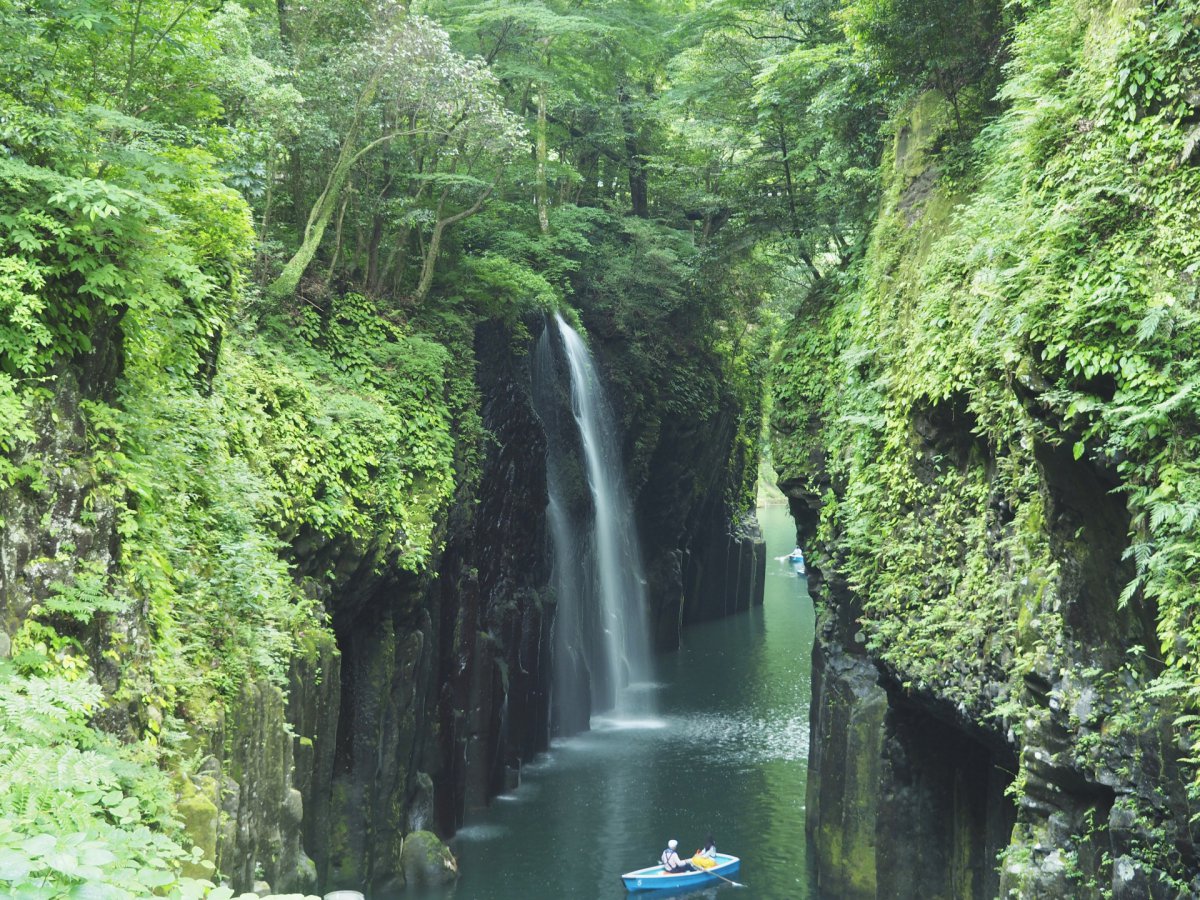
Overnight in Takachiho and see a traditional Japanese dance performance, held every evening at 8pm on the grounds of Takachiho shrine.
Day 9: Takachiho – Mount Aso
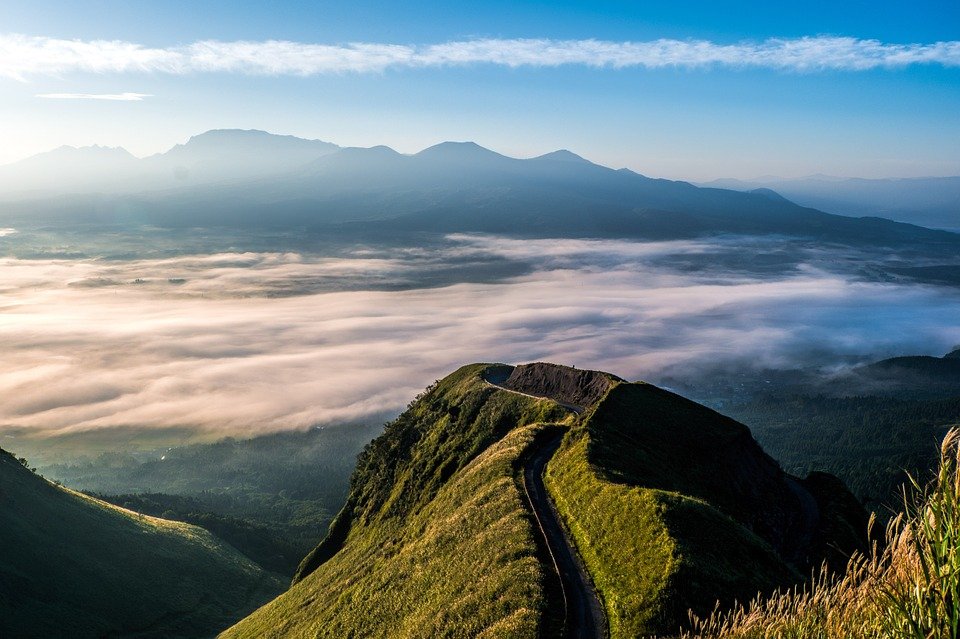
Wake up early and watch a magnificent sunrise at the nearby mountain peak called Kunimigaoka (国見ヶ丘), known for Japan’s famous unkai or sea of clouds. After one of the best sunrise views over the rice fields and Takachiho Valley, continue north and make your way to Mount Aso. But before visiting Japan’s largest active volcano, take a small detour and make a stop at the picturesque Kamishikimi Kumanoimasu Shrine. The path leading up to the shrine is lined with numerous stone lanterns, and it is worth the trip, even if you’re not a fan of shrines. The shrine is famous for being the setting of a popular anime and manga comic Hotarubi no Mori e (Into the Forest of Fireflies).
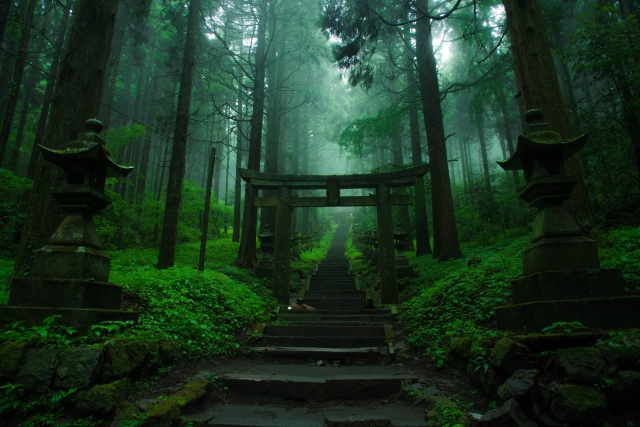
Mount Aso is one of the largest calderas in the entire world, spanning 17 kilometers from east to west and 25 kilometers from south to north with a total area of 350 square kilometers. Standing at 1592 meters above sea level and boasting five soaring peaks, Mount Aso is a must-visit for anyone visiting Kyushu. Hiking the Mount Aso region is one of the most incredible adventures you can have in Japan! It is possible to drive to the top of Mount Nakadake (中岳), or you walk in about 30 minutes to the summit. Alternatively, you can also take the ropeway around Mt. Aso and ride the plains created by the magma below the mountain. From the parking or the ropeway station, there are a number of hiking trails to explore Mount Aso. Always check the current status of the area before you go as the volcano is still active and often closed. To find out the current restrictions in place you check the official website.
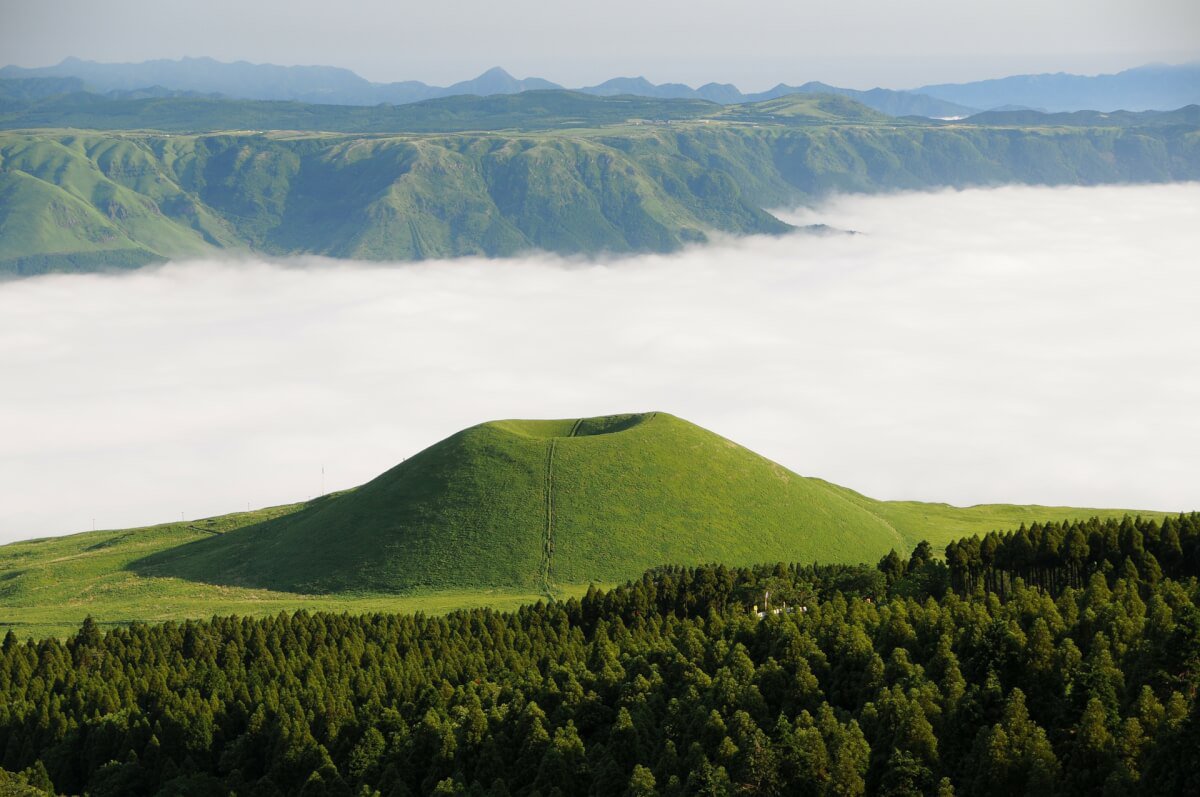
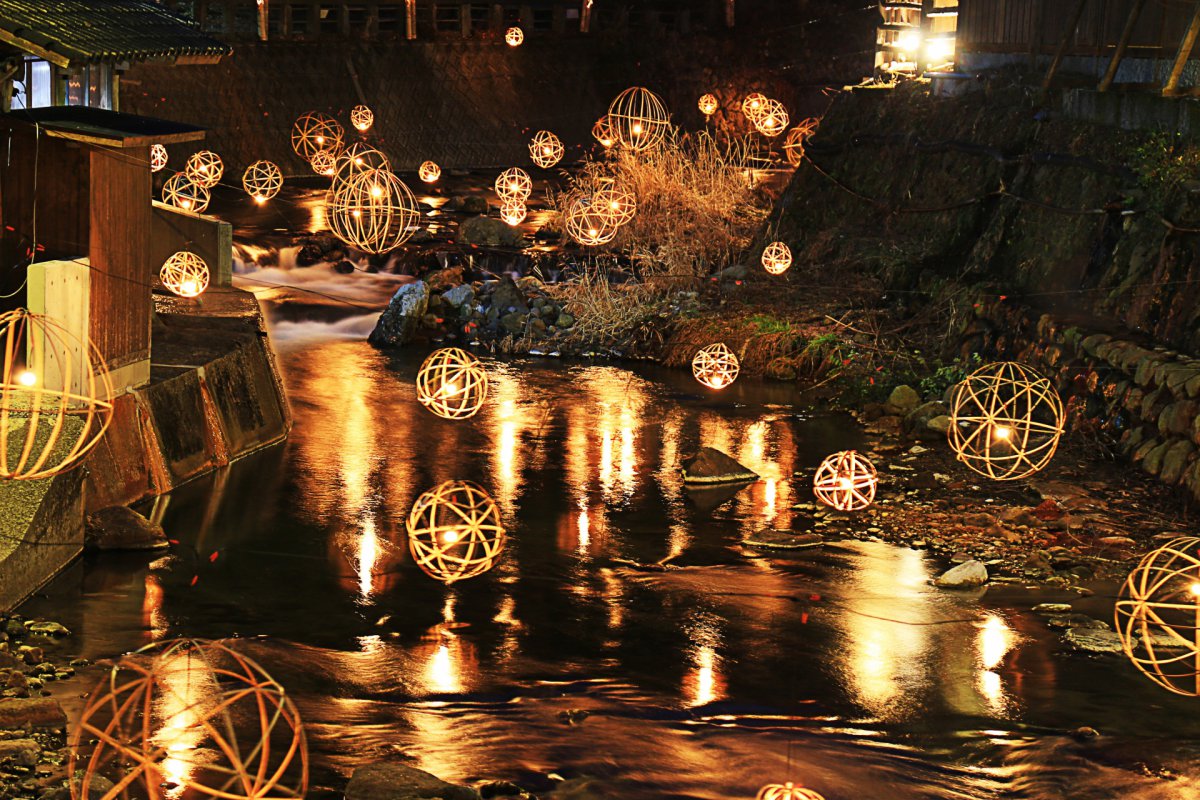
After taking in the breathtaking volcanic scenery of Mount Aso, make your way to Kurokawa Onsen (黒川温泉), a secluded onsen town up in the Aso mountain range. Kurokawa Onsen has managed to maintain the traditional atmosphere with ryokan and public bathhouses dominating the townscape. The charming town is home to a number of ryokan baths and public baths and visitors can purchase a tegata for ¥1,300 that offers access to any three of the participating onsen. Stroll around in your yukata and wooden sandals and relax after a long day of exploration.
Day 9: Kurokawa – Yufuin
After Kurokawa Onsen the next destination on the list is Yufuin (由布院), a popular onsen resort town in Oita Prefecture. You have two options of getting there by car and we recommend taking the road passing the Kuji Mountain (九重山) range along the way. The mountains are located along the scenic drive Yamanami Highway.
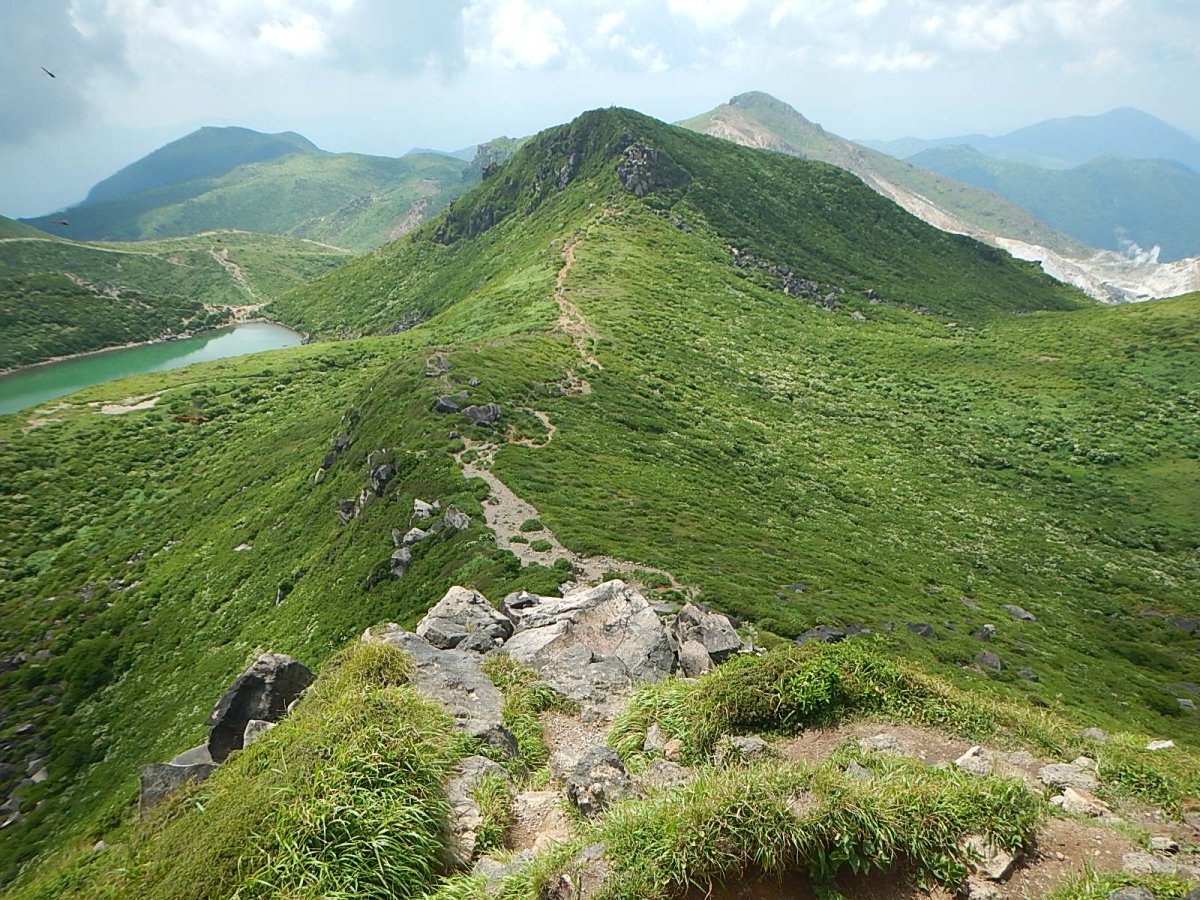
The natural hot springs of Yufuin are a must-try of course and there are several public baths that can be used by visitors like Tsuka no Ma, Baien and Musoen. Some of the baths are gender separated whereas others are mixed. Yufuin is located on a flat river basin nestled in a mountainous valley, with scenic views of Mount Yufu, a volcano that stands 1.83 meters tall, from nearly every place in town. Along the main street, you will find many souvenir shops, cafes and small art museums, creating a lively atmosphere. Most of the public baths and ryokan are scattered around the town and many visitors come to visit for just the day. Staying overnight will offer you the opportunity to enjoy the natural hot spring and the second no other place views. Because there are many mountains surrounding Yufuin, there are also plenty of hiking trails with easy access from the town. For example, this day trip hiking to the summit of Mount Yufu, takes about 4-5 hours to complete. On a clear day, the views are guaranteed jaw-dropping.
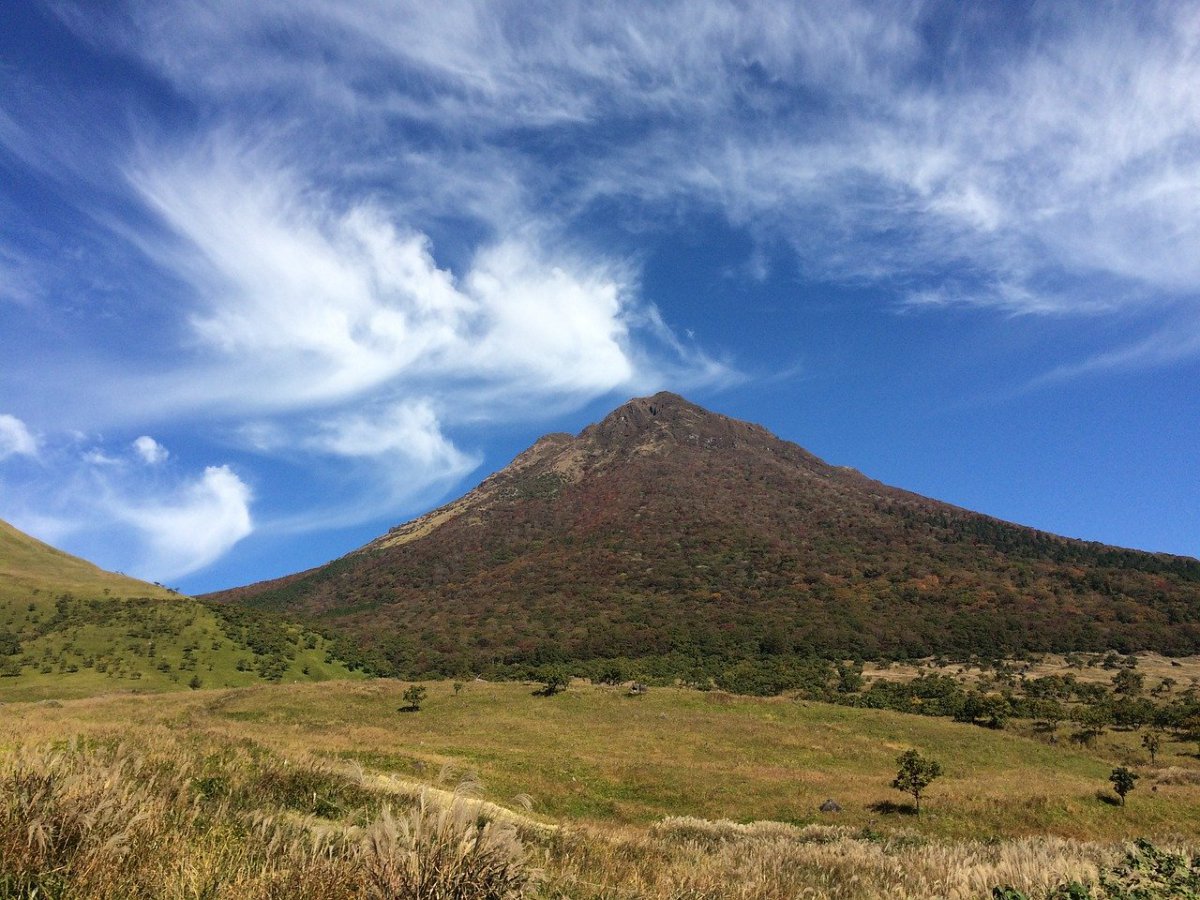
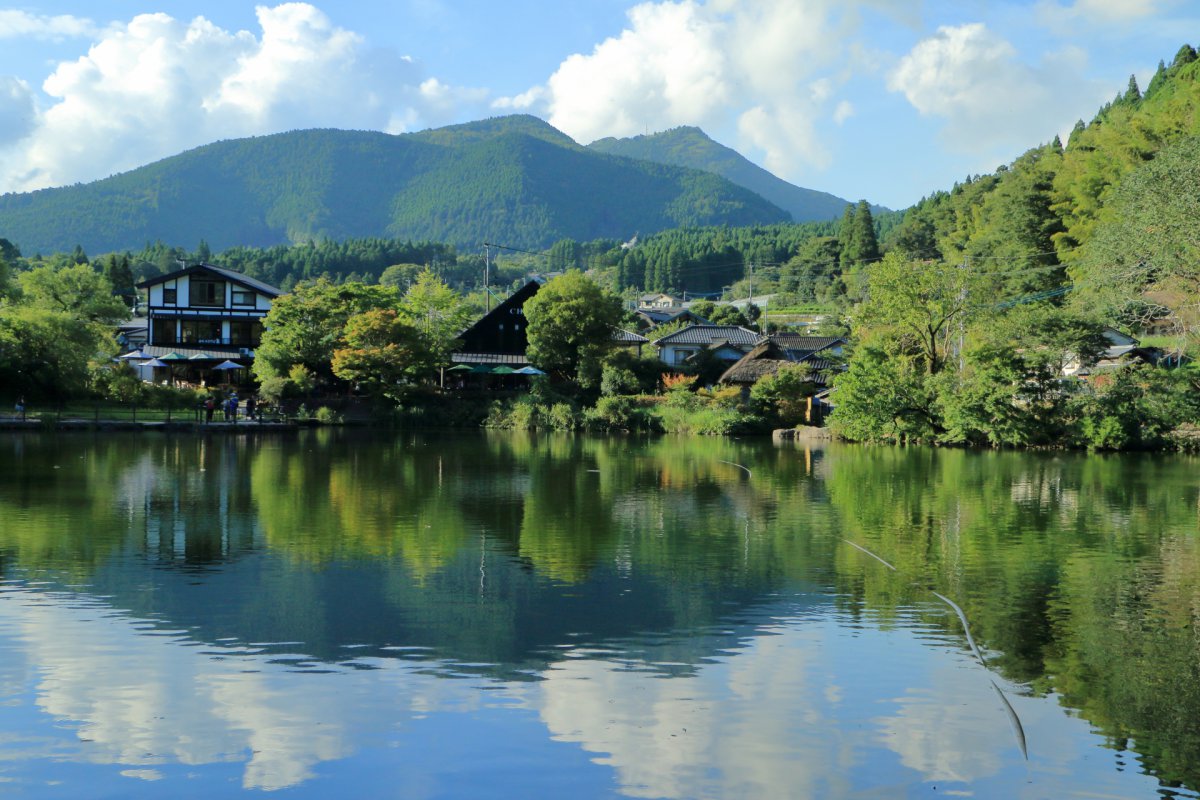
Another highlight nearby is Lake Kinrin at the base of Mt. Yufu. The small lake is located at the end of the main walking route of Yufuin. There is a small shrine located on the southern shore and there are charming little cafes and shops selling local specialties.
We recommend staying at the traditional ryokan, Yufuin Iyotomi. The ryokan has indoor cypress baths and a large outdoor bath (rotenburo).
Day 10: Beppu – Oita
Situated at the heart of Oita Prefecture, Beppu (別府) is one of Japan’s most popular hot spring resorts. The area produces the greatest amount of thermal water from natural hot springs in the world. You can’t miss it, there is steam rising into the air everywhere in Beppu. There is a wide range of baths to be enjoyed, from normal hot water baths to mud baths, sand baths and steam baths, Beppu offers it all.
In addition, the Hells of Beppu (地獄, jigoku) are a must-visit when you’re in the area. The hells of Beppu are seven incredible hot springs created by volcanic activity more than 30,000 years ago. These hot springs are for viewing rather than bathing as they are far too hot; the temperature reaches up to 100 degrees Celsius. The most beautiful hell is Umi Jigoku, or Sea Hell, a pond of boiling milky blue water, shrouded in steam. The grounds also feature a large garden and a few smaller, orange-colored hells. Chinoike Jigoku or Blood Pond Hell is another spectacular hell with bright red water, thanks to the high levels of iron and magnesium in the water.
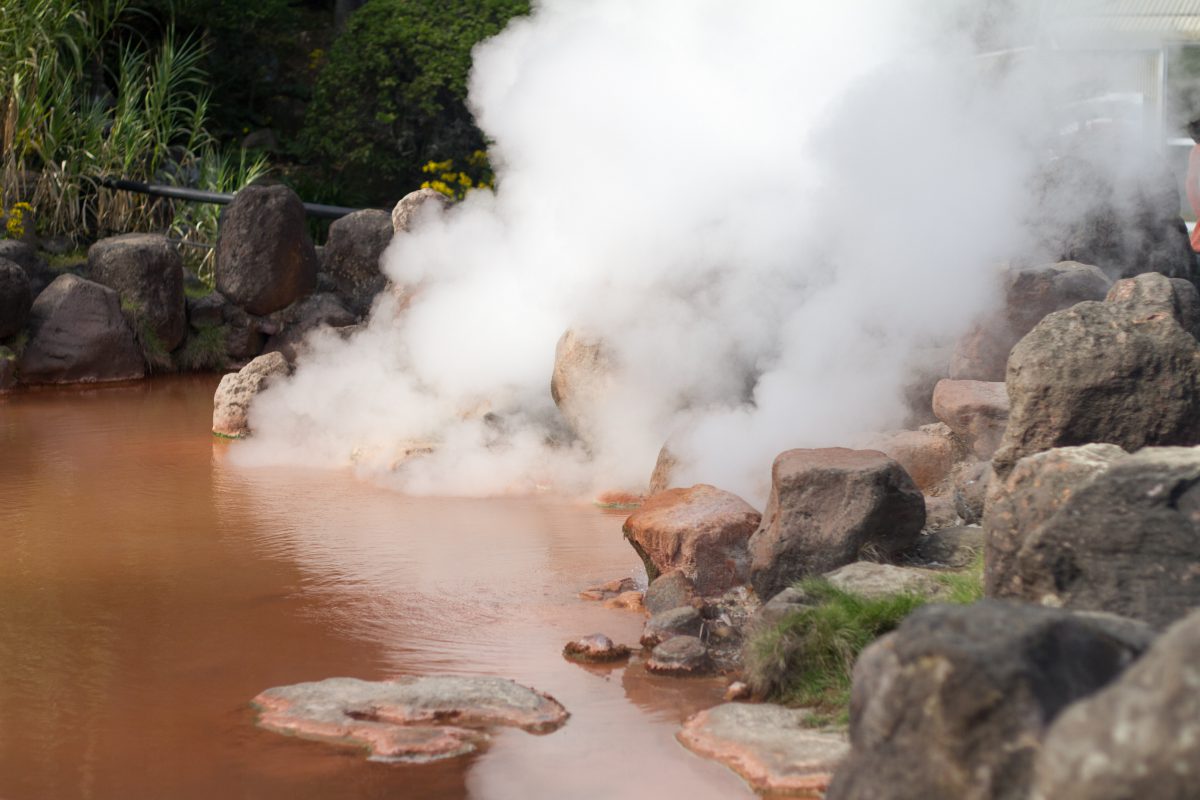
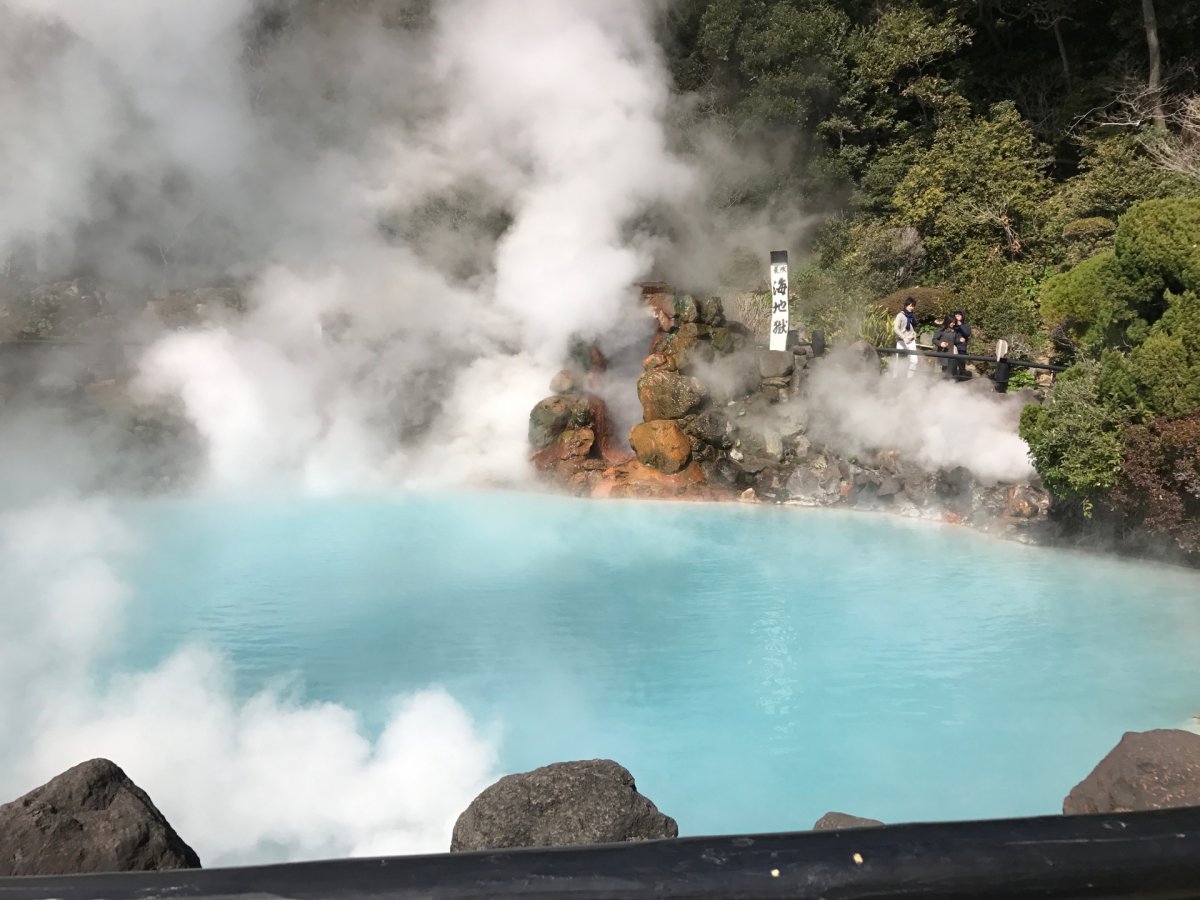
Onbara (乙原の滝) is a hidden gem near Beppu where you can enjoy a short trek passing the epic waterfall of Onbara Falls. There are several beautiful waterfalls in the area around Beppu, but Onbara Falls is the most beautiful and accessible. There is a short, well-marked trail with a dirt/rock path leading you up to the falls. Start your day with a beautiful little walk, the trail is only about a 2km return and refresh at one of the many natural hot springs after.
We recommend you also visit the Beppu Sand Bath (別府海浜砂湯) where you don’t bathe in hot water, but in hot sand instead! Being buried in the hot volcanic sand is a healthy and relaxing experience.
From Beppu you have the option of flying to your next destination using Oita Airport (大分空港). If you are continuing tour trip from Fukuoka, we highly recommend taking the Yufuin no More train to Fukuoka. The sightseeing train is a popular train ride to take and gives you some amazing views of both prefectures on the way.
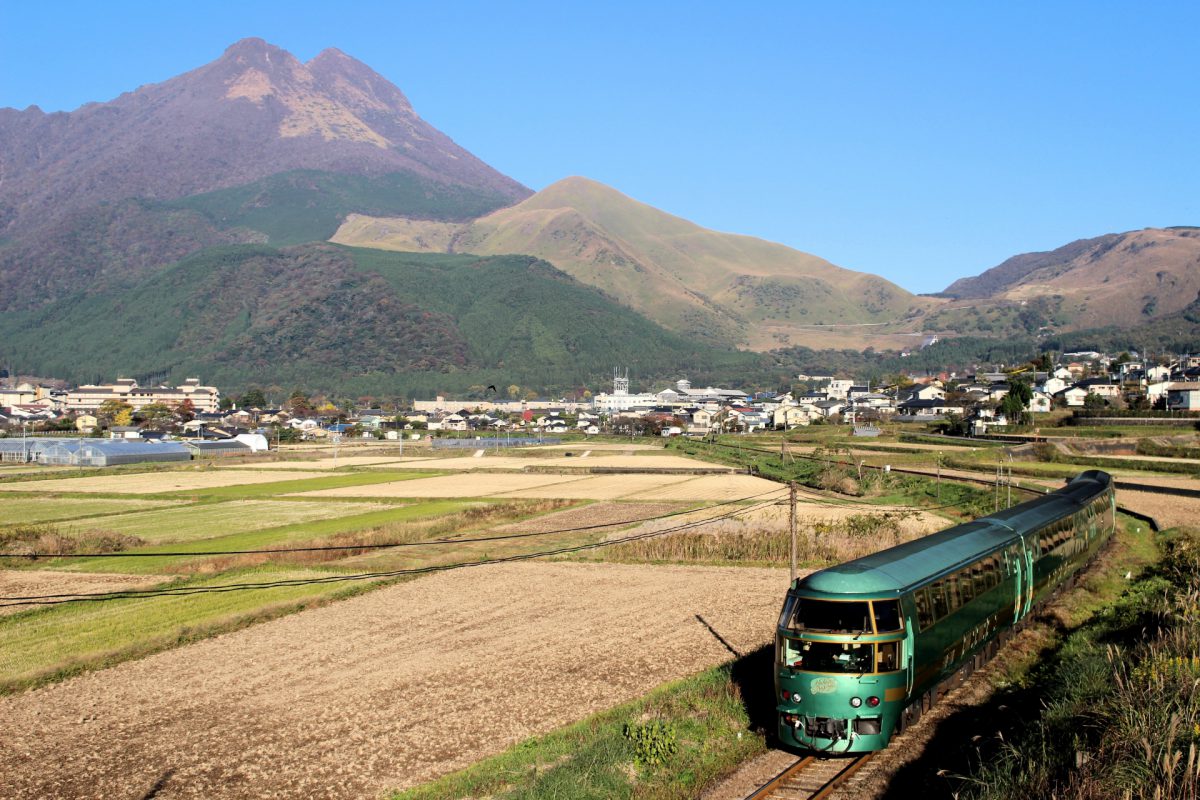
With this 10 day itinerary, you will visit many of the highlights of Kyushu. We recommend you to self-drive, as public transportation is limited especially in the more rural parts including Kirishima and Takachiho Gorge. A car offers you the freedom to visit the tourist hotspots of Kyushu in a short amount of time. This ready-to-use Kyushu itinerary serves as an example of the ultimate Kyushu trip, of course, you can extend this itinerary and stay longer at some places or add other places from your wishlist.
Follow us on Instagram, Facebook and Twitter for more travel inspiration. Or tag us to get featured!
Happy traveling!
Tour Packages
Blogs you might also enjoy
This post may contain some affiliate links. When you click through and make a purchase we may receive some commission, at no extra costs to you
